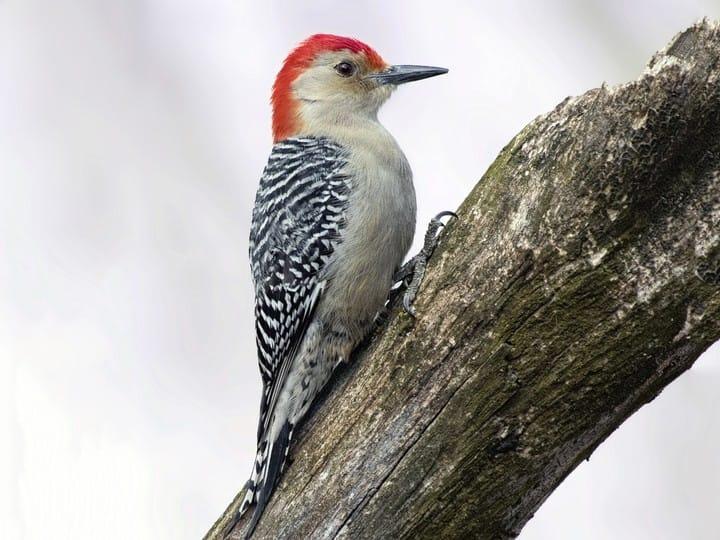Discover the Interesting World of Woodpeckers: Everything You Required to Know
The globe of woodpeckers is a world filled with distinct actions, intricate adaptations, and a varied selection of species. From their habitats and circulation patterns to their feeding routines and specialized physiological features, woodpeckers have long astounded the rate of interest of ornithologists and nature enthusiasts alike.
Woodpecker Habitats and Distribution
Woodpeckers inhabit a varied variety of settings worldwide, showcasing adaptability in their circulation patterns. These durable birds are located in woodlands, timberlands, savannas, and deserts across different continents, demonstrating their capacity to grow in different weather conditions. In The United States and Canada, as an example, woodpeckers can be identified in both coniferous and deciduous woodlands, using their solid beaks to forage for insects and produce nesting cavities in trees. In Africa, particular woodpecker varieties have adapted to dry settings, such as the acacia timberlands, where they play an important role in controlling insect populaces.

Feeding Behaviors and Diet
Amongst the various aspects of their actions, woodpeckers exhibit distinctive feeding behaviors and dietary choices. These birds are primarily insectivores, with a diet that consists of ants, beetles, caterpillars, and various other pests located in trees. Woodpeckers utilize their solid beaks to drill right into the bark of trees, probing for pests and larvae hidden under the surface. In addition to insects, woodpeckers additionally eat nuts, seeds, fruits, and sap. Some types have specialized tongues with barbed ideas that aid them remove insects from holes in timber.
Woodpeckers are recognized for their drumming actions, which offers not only to connect with other woodpeckers yet likewise to find food. The quick drumming noise is created by the bird pecking on resonant surface areas like dead trees or steel posts. This behavior can attract insects hidden in the wood, allowing the woodpecker to detect their visibility and feed on them.
Special Adaptations for Tree Climbing
In their proficient search of pests concealed within tree bark, woodpeckers have actually developed remarkable anatomical attributes that outfit them with special adjustments for efficient tree climbing. One of the key adaptations is their zygodactyl feet, with 2 toes directing ahead and 2 aiming backwards, giving a solid grip on tree trunks. This customized foot plan allows woodpeckers to stick to upright surface areas effortlessly, enabling them to relocate up and down trees with dexterity. Additionally, woodpeckers have rigid tail plumes that function as an encouraging prop while they climb up, helping in equilibrium and security. Their strong, chisel-like beaks are not only utilized for boring right into timber however additionally for gripping onto bark as they rise tree trunks. Woodpeckers have solid neck muscles and a distinct skull structure that take in the effect of consistent pecking, allowing them to climb vertically without creating damage to their brains. These adaptations showcase the incredible transformative design that enables woodpeckers to browse trees with precision and effectiveness.
Diverse Woodpecker Variety Worldwide
With over 200 different types spread out across various habitats worldwide, the household of Picidae includes an amazing variety of woodpeckers. These birds can be discovered in woodlands, forests, savannas, and also urban locations, showcasing their flexibility to various atmospheres. From the iconic Northern Flicker in The United States And Canada to the vivid and elusive Crimson-backed Flameback in Asia, each woodpecker types shows one-of-a-kind features in terms of tuft, habits, and environment choice.
Woodpeckers differ considerably in size, with the diminutive Downy Woodpecker determining around 6-7 inches in length, while the effective Lineated Woodpecker can Click This Link rise to 17 inches - Woodpeckers in Florida. Their beaks likewise can be found in various sizes and shapes, reflecting visit this page their feeding routines. Some types specialize in drawing out insects from tree bark, like the Acorn Woodpecker, while others, such as the Black-cheeked Woodpecker, prey on fruits and seeds

Conservation Efforts and Difficulties
Conservation initiatives for woodpecker populations are essential in mitigating the influence of habitat loss and other dangers dealing with these diverse avian species. Woodpeckers deal with numerous challenges to their survival, largely because of deforestation, urbanization, environment change, and intrusive types. To resolve these problems, conservation efforts concentrate on shielding and restoring woodpecker environments, carrying out sustainable forestry methods, and elevating awareness about the value of these birds in ecosystems.
One significant obstacle in woodpecker conservation is the fragmentation of their habitats, causing separated populations that are a lot more vulnerable to extinction - Woodpeckers in Florida. Conservationists function to create wildlife passages and secured locations that link these fragmented environments, permitting woodpeckers to relocate in between different areas for feeding, reproducing, and sanctuary

Conclusion
In final thought, woodpeckers are interesting birds with distinct adaptations for tree climbing and feeding behaviors. Further research and conservation actions are required why not try here to make certain the survival of woodpeckers in the wild.
Comments on “Woodpeckers in Florida Population: Types Overview and Preservation”